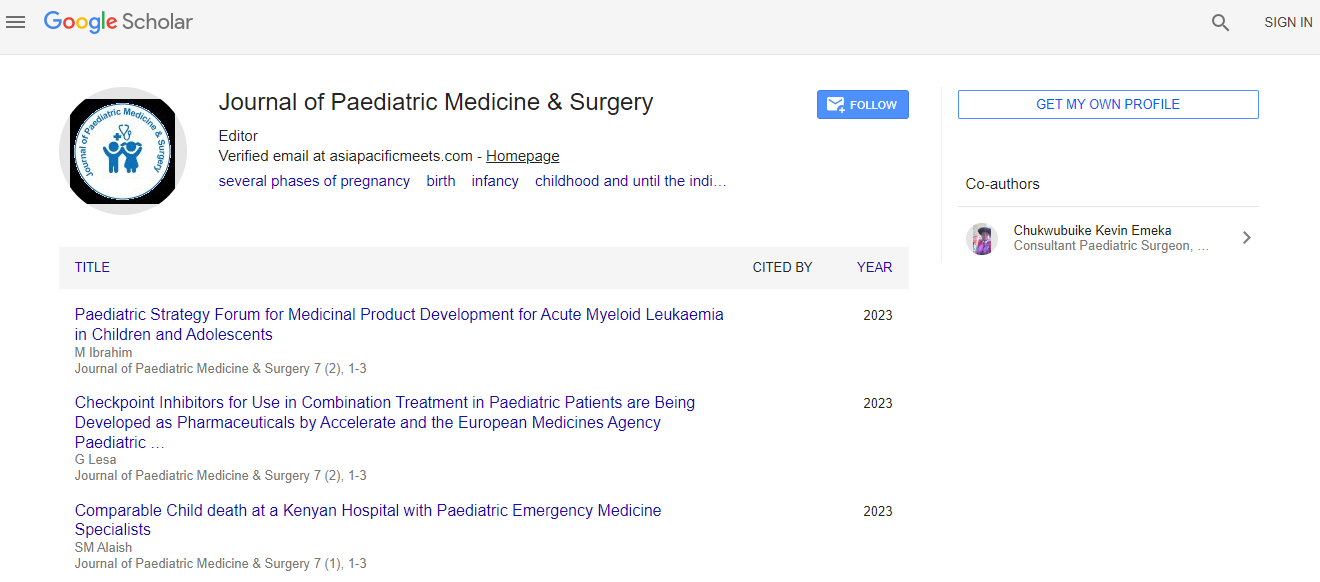Medical Informatics and Pediatrics Health 2019: Recurrent bacterial meningitis in children: Unusual presentation, approach and mini review - Gihad Alsaeed - AL-Takhassusi Hospital
*Corresponding Author:
Copyright: © 2019 . This is an open-access article distributed under the terms of the Creative Commons Attribution License, which permits unrestricted use, distribution, and reproduction in any medium, provided the original author and source are credited.
Abstract
Recurrent bacterial meningitis in pediatrics is a challenging diagnosis with a limited number of researches about it. Structural approach and early diagnosis of an underlying pathology are crucial to prevent further episodes and improve the overall outcome. 1.3% of children with bacterial meningitis had experienced at least one previous episode of bacterial meningitis previously. Anatomic abnormalities are the most common predisposing factor of RBM. Reappearance of microbial meningitis in adults is not only possibly life-threatening, but also involves or induces psychological trauma to the patients through repeated hospitalization and multiple invasive investigations if the underlying cause remains undetected. Microorganisms migration, along inherited or acquired pathways from the skull or spinal dual defects, gains entrance into the central nervous system (CNS) and should be taken into consideration when children face recurring microbial meningitis, though, indications and ciphers of cerebrospinal fluid (CSF) rhinorrhoea or otorrhea are rare in such patients. To notice an occult dual lesion along the craniospinal axis, such as basal encephalocele, Microorganisms migration, along inherited or acquired pathways from the skull or spinal dermal sinus tract, or neurenteric cyst, a detailed clinical evaluation and the use of the modern diagnostic imaging methods is necessary. Recurrent meningitis in children, without indication of CSF leak, a cranial symptom/sign or coccygeal cutaneous stigmata may suggest the approximate lesion site, diagnosis and detection remains difficult. We had did a reflective case series to analyse the clinical performance, predisposing issues, action and outcome of children with recurring meningitis admitted at Shifa International hospital, Islamabad. All broods giving with recurring meningitis from December 2006 to May 2011 were included in the study. There were a total of 8 children with a mean age of 6 +/- 2.97 years (2-10 years). Majority (87%) were males. There was an average of 4 +/- 4.92 (2-9) episodes of meningitis in each patient. Fever also with vomiting was the most corporate (87%) presenting symptom, followed by seizures (62%) and headache (50%). The underlying etiology was confirmed on CSF analysis, computed tomography scan (CT) and magnetic resonance imaging (MRI). About half of them had the past of head trauma.
Although rare, results in an increased risk of acute complications and long-term morbidity. All responded to antibiotics and six needed surgery. Because of the option of concomitant incidence of more than one malformation, both the frontal and the lateral skull base should be carefully evaluated. Precise localization of the dural lesion is a precondition for fruitful surgical repair. In addition, the bacteria specificity could leave significant clues: Recurrent bacterial meningitis is an uncommon but life-threatening condition. Fourteen patients (10 male, 4 female) on follow up, 2 (25%) children had some neurological impairment. treated for recurrent bacterial meningitis were reviewed. There were 67 episodes of meningitis documented in these 14 patients. Six patients had developmental anatomical defects, five had traumatic anatomical defects and three had primary immune deficiency diseases as predisposing conditions. We suggest that, in a case of recurrent meningitis, a pediatrician should question and examine the patient carefully in search of a possible anatomical defect or immunodeficiency. Vaccination and surgical treatment of the anatomical the mean age of the patients was 87 months (range: 6 months to 13 years) defects may be the aim of this study was to evaluate the demographic, clinical, microbiological, and radiological features of recurrent bacterial meningitis in children important.
Pneumoccocus or Hemophilus suggests cranial dural defects, Asplenia or immunodeficiency such as complement or immunoglobulin deficiency rarely causes recurrent meningitis without a history of frequent infection of non-CNS areas. Salmonella meningitis or brain abscess should not be treated incompletely or inadequately and could lead to recrudescence, relapse or recurrence of bacterial meningitis. Antibiotic (penicillin or trimethoprim-sulfamethoxazole) induced meningitis may repetitively happen on time. Bacterial meningitis is a although rare, results in an increased risk of acute complications and long-term morbidity life threatening disease. Greatest patients will experience only one episode throughout life. Children, who knowledge microbial meningitis more than once, requires further immunologic E. coli or other gram negative bacilli suggests spinal dural defects, and meningococci suggest immunologic deficiency or anatomic evaluation. We report a 9 year old youngster with five incidents of microbial meningitis due to a congenital flaw of the skull base. A two and a half year old boy primary obtainable to our medical center with pneumococcal meningitis. He was treated with antibiotics and fully recovered. After two months he obtainable again with a similar clinical picture.
Congenital ear malformation is the leading cause. I mmunodeficienies are of much less importance with terminal complements deficiency as the main cause. Histroy of head trauma is important but should not exclude other possibilities. The aim of this presentation is to present a rare case of RBM and put an approach plan for children with such presentation.

 Spanish
Spanish  Chinese
Chinese  Russian
Russian  German
German  French
French  Japanese
Japanese  Portuguese
Portuguese  Hindi
Hindi 